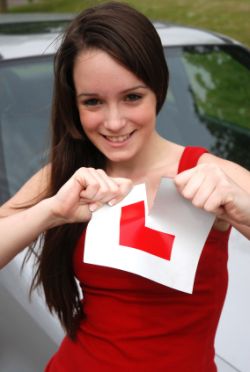Switching to driving an automatic
When you switch to an automatic car it could be for a wide range of reasons. Of course number one on that list could be that you are simply given an automatic car or you are driving in a country such as the United States where all cars tend to have an automatic transmission.
Whatever the reason, it will take a little bit of getting used to not automatically reaching over for the gears all the time as you would ordinarily and as becomes almost instinctive habit in a geared car.
You should familiarise yourself with the controls on the selector lever, and which option is for and when to select it. You must of course remember to move into 'P' when you park the car and exit it and it is particularly essential that you have the hand brake on with an automatic, even more so than with a manual drive car.
You will probably notice that the accelerator is a little more sensitive in an automatic than in a manual, and may also find that when you ease off the gas a higher gear could be selected, so one technique to slow down before you approach a bend or a junction, and as you turn into the bend to gently accelerate.
When it comes to braking, the braking effect from the transmission is usually more subtle (e.g. less) than with a manual car where the engine braking may be more pronounced. Overall, clearly the biggest benefit of an automatic is that it saes having to switch gear all the time and particularly for those who spend their lives in queues on the way to work and back it can save the constant switching of gears and use of the clutch; for those who have some physical disability too an automatica can be an atractive option or even necessary.
Related Articles...
What is driving test theory?
Theory is something we understand when it comes to maths or science. A theory is a prediction as to why something that has usually been observed to happen does happen, and scientists use theories...
What time of day should I book my driving test?
This is entirely up to you and so there is no right or wrong answer to this.
Many of us function either better in the morning or in the afternoon. If
you are a morning person then you will...
Towing a load such as a caravan
When you tow a vehicle such as a caravan, it is clearly the case that driving conditions will be very different, and much more so again than simply having a heavier load or having a roof rack...
The risk of accidents - some statistics
No-one wants to think that they will be involved in an accident, but being aware that an accident could happen to you and the statistics is important. Accidents happen to ordinary people, so anyone...
Various road markings you might find
Many drivers who are good at interpreting and understanding what a large range of road signs mean are not so good when it comes to road markings.
Some drivers appear to not even really be...
The multiple choice theory test
This is the first part of the theory test, and is done at a computer rather than on paper. There are many places around the country whereby you are able to take the theory test. Your driving...
The photocard driving licence
The new type of driving licence is a photocard, and it has several features on it that it is worth understanding once you are issued with your photocard driving licence.
It contains your...
Testing your driving ability
The driving part of the test to assess if you are safe to let on the roads is called the practical test, and it lasts in the region of 40 minutes in total. The purpose is to assess if you can drive...
Motorway Driving Tips
Driving on a motorway for the first time can be both exciting and a little daunting - exciting as it is something new whilst daunting as you won't have experienced driving on a motorway before...
How does the hazard perception test work
The hazard perception test is the second part of the driving theory test, and it was introduced towards the end of 2002.
There are two parts to the theory test, and the second part of the test...
Back to home page of driving theory test questions

